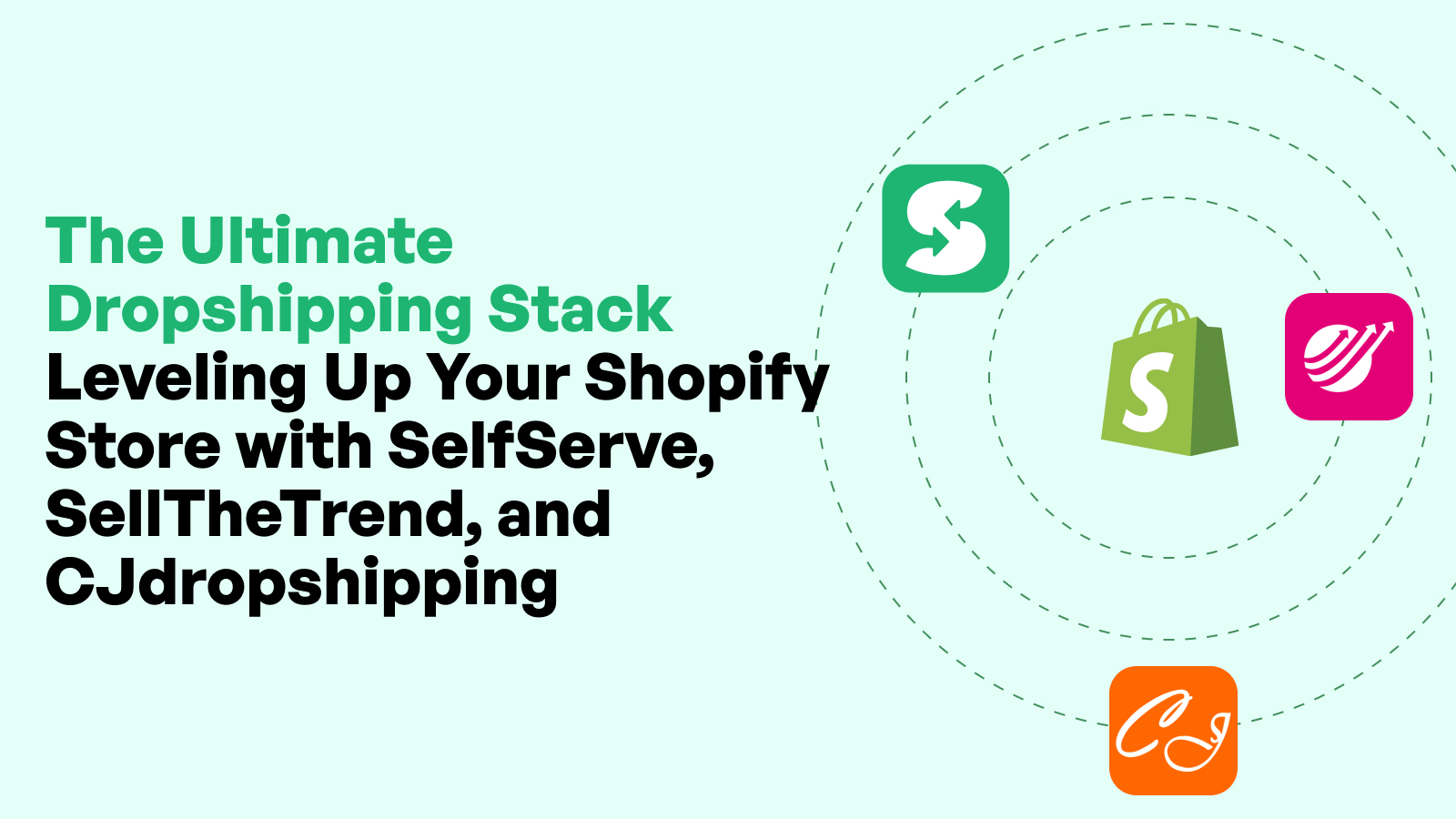How to Manage Returns and Refunds Smoothly on Shopify

Introduction: Why a Seamless Return and Refund Process Matters
For Shopify merchants, returns and refunds are an inevitable part of running an e-commerce business. Yet, instead of treating them as a burden, the most successful brands view returns as a critical touchpoint in the customer journey — one that can either strengthen or weaken long-term trust. With customer expectations rising, the ability to handle returns smoothly is now a competitive necessity.
A frictionless return and refund process builds confidence. When buyers know they can easily return or exchange items, they are more likely to complete their purchase. On the other hand, unclear or rigid return policies can lead to cart abandonment, negative reviews, and a decline in customer loyalty. A well-executed return strategy improves customer retention, increases lifetime value, and reduces the costs associated with customer acquisition over time.
The Role of Returns in Building Customer Trust and Loyalty
Returns are not just transactions — they are opportunities. A generous, transparent, and efficient return process shows customers that your brand cares about their satisfaction. When customers feel supported post-purchase, they are far more likely to return, even after a return.
Shopify merchants who offer flexible return windows, clear communication, and fast refunds often see higher Net Promoter Scores (NPS) and positive reviews. In fact, a smooth return experience can convert a potentially negative interaction into one that strengthens brand trust.
Impact of Poor Return Management on Shopify Merchant Reputation
If returns are handled poorly — with delays, denial of refunds, or hard-to-understand policies — customers quickly lose confidence. In today’s review-driven world, one negative experience can damage a Shopify store’s reputation and decrease conversion rates.
Return-related complaints can also increase customer service costs and reduce operational efficiency. Poor return workflows lead to inventory mismatches, revenue leakage, and avoidable churn. For Shopify merchants looking to scale sustainably, optimizing returns is no longer optional — it’s fundamental to long-term success.
Understanding Shopify’s Native Return Capabilities
What Shopify Offers Out-of-the-Box for Returns
Shopify provides basic tools to help merchants manage returns. At its core, the Shopify admin allows you to manually issue refunds, restock inventory, and record return reasons. You can track returns per order and manage refund timelines directly within each order detail.
Shopify also supports return notifications to customers and integrates with some return label systems. For stores with modest return volumes, these features may be sufficient to handle operations without third-party tools.
Limitations of Shopify’s Default Return Features
While Shopify’s native return functionality covers the basics, it lacks automation, scalability, and customer self-service. There’s no built-in return portal, dynamic rules engine, or automation for return approval. This means Shopify merchants often need to manage returns manually, which becomes cumbersome as order volume increases.
For Shopify merchants looking to streamline workflows or offer branded, customer-friendly return portals, third-party apps become necessary. Shopify’s ecosystem offers many integrations that enhance its core return features — making returns smarter, faster, and more customer-centric.
Creating a Clear and Customer-Friendly Return Policy
Elements of a High-Performing Return Policy
A great return policy is both generous and precise. Shopify merchants should clearly define eligibility criteria, return timeframes, refund types, and conditions. For example, stating that items must be returned within 30 days in original packaging ensures expectations are set upfront.
Use simple language. Customers should be able to understand your policy without reading fine print. Address key questions: Who pays for return shipping? Can sale items be returned? What’s the process for initiating a return? Providing this clarity minimizes disputes and support tickets.
Where and How to Display Return Information Effectively
Visibility is just as important as content. Shopify merchants should place return policy links on product pages, in the site footer, at checkout, and in order confirmation emails. This transparency builds trust pre-purchase and reduces hesitation.
You can also use pop-ups or chatbots to summarize return policy highlights, especially for new visitors. Ensuring your policy is mobile-friendly and easy to access across touchpoints helps reduce friction and improve conversions.
Legal Considerations and Regional Regulations
Different countries and regions have varying laws about returns. For example, in the EU, customers have the right to return most online purchases within 14 days. Shopify merchants selling internationally must comply with regional consumer protection laws and update policies accordingly.
Be clear about exceptions, like final-sale or personalized items, and offer translations if you serve multilingual markets. Keeping your return policy compliant and transparent protects both your customers and your business.
Setting Return Windows and Conditions Strategically
How to Choose the Right Return Period for Your Products
Setting a return window is a balancing act between customer expectations and operational costs. While most e-commerce brands offer 14–30 day return periods, Shopify merchants should tailor the return window based on product category, price point, and sales cycle.
For example, apparel often benefits from longer return periods due to sizing issues, while perishable goods or seasonal items may require shorter timeframes. Consider aligning your return window with shipping timelines and customer usage patterns to reduce abuse while maintaining fairness.
Structuring Conditions: Used vs. Unused, Original Packaging, Tags
Clarity around item condition helps avoid disputes. Shopify merchants should specify whether returns are accepted only for unused products, if tags must be attached, and whether original packaging is required.
Some merchants implement conditional approvals — accepting lightly used items for store credit but requiring pristine condition for full refunds. Ensure your policy is detailed and includes examples of what constitutes acceptable return condition to guide customers and reduce ambiguity.
Handling Exceptions: Personalized, Intimate, and Sale Items
Certain product types demand stricter return policies. Personalized goods, intimate items like underwear, or clearance merchandise often fall under final sale categories. Shopify merchants should label these clearly both on product pages and at checkout.
It’s also good practice to remind customers of these restrictions in their order confirmation emails. Managing expectations early prevents disappointment and protects your margins on sensitive or high-risk inventory.
Automating the Return Workflow
Tools and Apps to Streamline Return Requests
As order volume grows, managing returns manually becomes inefficient. Fortunately, the Shopify App Store offers robust tools like Loop Returns, AfterShip Returns Center, and Returnly to automate return processes.
These platforms allow Shopify merchants to set return conditions, automate approvals, issue return labels, and track return statuses. Merchants can customize workflows by product category, customer profile, or order value — helping streamline operations while delivering a better customer experience.
Creating Self-Service Return Portals
Self-service portals empower customers to initiate returns without contacting support, reducing strain on your team. Shopify merchants using return apps can embed branded portals directly on their site where customers enter order numbers, select reasons for return, and print labels.
These portals also reduce return-related friction by setting clear rules, options for exchanges or store credit, and automated updates. A positive self-service experience reinforces brand trust and saves time for both customers and staff.
Integration with Shopify Order and Inventory Systems
Smooth return processing requires integration with Shopify’s order and inventory systems. Most return tools sync directly with the Shopify backend, allowing for automatic inventory adjustments, order tagging, and refund triggers.
Shopify merchants benefit from real-time status updates, analytics dashboards, and unified reporting. This visibility enables better forecasting, restocking decisions, and customer service alignment.
Managing Return Shipping Logistics
Who Pays for Return Shipping: Customer vs. Merchant
Shipping costs are often the largest expense in the return process. Shopify merchants must decide whether to offer free return shipping, split the cost, or make customers pay. Each approach has pros and cons.
Offering free returns builds trust and improves conversion, but can impact margins. Charging for return shipping can deter abuse but may lower satisfaction. Many merchants opt for conditional policies, such as free returns for first-time buyers or exchanges only. The key is transparency and strategic alignment with your business goals.
Using Prepaid Return Labels and Third-Party Logistics Providers
Prepaid return labels simplify logistics and enhance customer satisfaction. Shopify merchants can generate these labels using tools like ShipStation, EasyPost, or directly through return management apps.
For higher-volume stores, partnering with 3PLs (third-party logistics providers) enables consolidated return handling. These providers inspect, repackage, and restock items — often reducing overhead and turnaround time. Outsourcing returns can be especially helpful during peak seasons or sales events.
Handling International Returns and Cross-border Complexities
International returns introduce challenges like customs, language barriers, and long shipping timelines. Shopify merchants selling globally must define country-specific policies, including who pays for return shipping and how duties are handled.
Using return partners like Global-e, Passport, or Zonos helps streamline international returns. These tools calculate taxes, generate localized return labels, and support customer communication in multiple languages. Offering a smooth global return experience expands your brand’s reach and customer loyalty.
Processing Refunds Efficiently Within Shopify
Manual vs. Automated Refunds in Shopify Admin
Shopify merchants can issue refunds directly through the Shopify Admin interface. For one-off cases, manual processing allows flexibility — such as refunding partial amounts or restocking specific SKUs. It’s ideal for smaller stores or lower return volumes.
However, as returns scale, automation becomes essential. Many return management apps integrate refund automation, enabling Shopify merchants to approve and process refunds based on predefined rules. This reduces human error, accelerates resolution time, and improves operational consistency. Automated workflows also ensure refund data is logged properly for accounting and inventory management.
Managing Partial Refunds and Store Credit Options
Not every return warrants a full refund. Shopify merchants often issue partial refunds for damaged packaging, missing accessories, or partial returns. Shopify’s platform allows you to specify refund amounts by item, tax, and shipping line — giving you full control.
Store credit is another valuable tool. Offering credit rather than cash retains revenue and encourages repeat business. Apps like Rise.ai and Loop Returns enable store credit automation, applying it via gift cards or loyalty programs. This strategy turns returns into future sales while preserving your bottom line.
Dealing With Gift Cards, Exchanges, and Bundled Items
Returns involving gift cards or bundles can get complex. Shopify doesn’t allow refunding a gift card directly, but merchants can issue a new one or credit the purchasing customer. Exchanges are typically processed as a return + new order, though return apps may streamline this.
For bundles, clearly define your return policy — do customers return the entire bundle or just the item in question? Shopify merchants should ensure these rules are reflected in both their policies and return portal logic to avoid confusion and support tickets.
Leveraging Returns as a Customer Experience Touchpoint
Communicating Proactively During the Return Journey
Clear, proactive communication is critical throughout the return process. Shopify merchants should notify customers when a return is approved, when the item is received, and when the refund is processed. Automated email workflows through Shopify or third-party tools can keep customers informed at every step.
Reassuring messaging builds trust. Phrases like "Your return has been received and is being reviewed" or "Your refund has been issued and will arrive within 3–5 business days" prevent frustration. Even automated responses, when crafted thoughtfully, contribute to a better brand experience.
Post-Return Engagement Strategies: Surveys, Coupons, Thank-you Emails
Returns don’t have to mark the end of a customer relationship. Shopify merchants can use post-return emails to gather feedback via surveys, offer thank-you discounts, or highlight new arrivals based on customer behavior.
Simple gestures like a "We’re sorry it didn’t work out" message with a 10% discount code can turn disappointment into delight. Apps like Klaviyo or Omnisend make it easy to segment return customers and deliver personalized follow-up flows that drive future purchases.
Turning a Return Into a Future Sale
Handled well, returns can actually increase retention. Many Shopify merchants report that customers who return a product — but receive a fast refund, helpful service, and store credit — often return to make another purchase.
Upselling during returns is also effective. Offering a discount or recommending alternatives during the return process helps redirect intent rather than losing the sale entirely. With tools like the Self Serve Shopify App, merchants can embed these smart offers directly into their return portals or checkout workflows, making it easier to convert returns into long-term loyalty.
Reducing Return Rates Through Proactive Strategies
Optimizing Product Descriptions, Sizing Charts, and Images
Many returns stem from misaligned expectations. Inaccurate product images, vague descriptions, or missing sizing information can lead to disappointment upon delivery. Shopify merchants can reduce these issues by enhancing their product pages with detailed descriptions, high-resolution photos, and user-generated content.
For apparel and accessories, include sizing charts, fit notes, and model dimensions. Use videos or interactive 360 views for complex items. The goal is to help customers make confident, informed decisions before checkout — reducing post-purchase friction.
Educating Customers Pre-purchase to Reduce Mismatches
Informed customers are less likely to return products. Shopify merchants can create buyer guides, product comparison charts, and FAQs to help customers choose the right product the first time. Use on-page tabs or embedded content blocks to address common concerns like fit, compatibility, or use case.
Educational tools — such as "how to use" videos or onboarding sequences — also reduce returns. If your product requires assembly or has a learning curve, preemptively guiding customers can prevent avoidable dissatisfaction and returns.
Offering Live Chat, Product Quiz, or Fit Guides
Interactive tools increase buyer confidence. Shopify merchants who implement live chat, product recommendation quizzes, or AI-driven fit guides see significantly lower return rates. These tools help customers navigate choices and make purchases that align with their needs.
Apps like Octane AI or Fit Finder integrate seamlessly with Shopify and provide data-driven insights that refine product recommendations. Reducing uncertainty before checkout minimizes mismatches and improves overall satisfaction.
Handling Fraudulent or Abusive Return Behavior
Identifying and Flagging Return Abuse Patterns
Unfortunately, some customers exploit return policies for personal gain. Common signs of abuse include frequent returns, high-value item swaps, or serial returns from a single account. Shopify merchants can identify these patterns by analyzing return frequency, discrepancies in condition, and suspicious shipping behavior.
Return management apps often include analytics that flag high-risk customers or trigger manual reviews. You can also cross-reference purchase history to detect anomalies — for example, someone returning every third order could indicate opportunistic behavior.
Setting Up Return Rules and Blacklists for Repeat Offenders
Shopify merchants should implement rules that limit abuse while maintaining fairness. For example, you might cap the number of returns allowed per customer within a specific period or require manual approval for high-value items.
Repeat offenders can be added to internal blacklists, either through return apps or customer tags in Shopify. Clearly communicate your right to refuse returns in the case of abuse, and apply policies consistently. Always maintain documentation in case of chargebacks or disputes.
Balancing Protection With Customer Satisfaction
While it’s important to protect your business, being overly strict can alienate honest customers. The best Shopify merchants strike a balance — using automation and data to detect fraud while treating genuine customers with empathy.
Offer exceptions when warranted, especially for loyal customers or situations outside of their control. A measured, data-informed approach ensures your policy protects both your brand and your bottom line.
Return Metrics Every Shopify Merchant Should Track
Return Rate by SKU, Category, or Customer Segment
Tracking return rates by product type reveals valuable trends. Shopify merchants should regularly analyze which SKUs or categories have the highest returns and investigate the root causes — be it quality issues, poor fit, or unclear descriptions.
Segmenting return data by customer cohort or acquisition source (e.g., first-time vs. repeat buyers, social ads vs. organic search) can also uncover behavioral insights. This helps refine product development and marketing strategies.
Refund Impact on Margins and LTV (Customer Lifetime Value)
Returns erode gross profit — especially when shipping, processing, and restocking costs are considered. Shopify merchants should model return impact on contribution margin and lifetime value. High return rates can make some customer segments unprofitable.
Using tools like Lifetimely or Glew, you can calculate customer LTV with and without returns. This helps prioritize acquisition efforts, optimize discounting strategies, and improve overall unit economics.
Identifying Trends in Return Reasons for Operational Insights
Collecting and categorizing return reasons offers operational value. Whether the reason is "wrong size," "item not as described," or "received damaged," each data point informs better decision-making.
Shopify merchants can use return analytics to identify supplier issues, packaging failures, or misleading marketing. Over time, return reason trends help improve both products and customer experience.
Building Internal SOPs for Returns and Refunds
Standard Operating Procedures for Your Team
Clear SOPs (standard operating procedures) ensure returns are processed consistently and efficiently. Shopify merchants should document step-by-step workflows — from return request to item inspection, refund issuance, and inventory restocking.
These SOPs should include timelines, responsible parties, and escalation protocols. Whether handled in-house or by a 3PL, standardized processes reduce confusion, speed up resolution, and improve reporting accuracy.
Cross-functional Alignment Between Support, Fulfillment, and Finance
Returns impact multiple teams. Shopify merchants must ensure support reps, warehouse staff, and finance teams share the same playbook. Miscommunication leads to delays, double refunds, or lost inventory.
Hold cross-functional training sessions and create shared dashboards that show return volume, processing time, and refund trends. When teams are aligned, returns are handled faster and with fewer errors.
Training Staff to Handle Returns With Empathy and Accuracy
Returns often stem from disappointment. How your team handles these interactions can either recover or lose a customer. Train support staff to be empathetic, listen without judgment, and act quickly.
Empower agents with scripts, escalation guidelines, and tools to resolve returns fairly. A well-handled return experience often results in positive reviews, even if the product wasn’t a good fit.
Handling Holiday and Peak Season Returns
Setting Seasonal Return Extensions and Messaging
During the holiday season, return windows must account for early gifting and delayed purchases. Shopify merchants commonly extend return windows to 45–60 days to accommodate this.
Communicate these extended policies prominently — on product pages, checkout, and post-purchase emails. This gives shoppers confidence to buy early without risk.
Preparing Fulfillment and Support Teams for Increased Volume
Returns surge post-holiday. Prepare by pre-staffing your support team, reviewing SOPs, and allocating warehouse space for returned inventory. Shopify merchants should also forecast return volumes using prior year data and prepare accordingly.
Implement automation tools to reduce manual burden and ensure returns are processed within SLA. A smooth January return process reinforces goodwill with holiday customers.
Using Analytics to Forecast Return Surge Timing
Use historical data to forecast when returns will peak. For many Shopify merchants, this occurs in early January, two weeks after Christmas. Anticipating this lets you manage staffing, inventory, and communication.
Segment return rates by channel or product type to identify which SKUs are most likely to come back. This enables proactive messaging and smarter inventory planning.
Conclusion: Transforming Returns Into Retention
Returns are not a failure — they are part of the customer journey. When managed strategically, they become an opportunity to earn loyalty, recover revenue, and improve operations. Shopify merchants who invest in clear policies, automation tools, analytics, and proactive support turn returns into a competitive advantage.
Equipped with the right SOPs and customer-centric mindset, merchants can navigate returns without losing margin or customer trust. And for those looking to scale operations efficiently while keeping the customer experience seamless, the Self Serve Shopify App is an invaluable solution — automating return workflows, streamlining refund approvals, and enhancing support team productivity across the board.
SEO FAQs
1. How do I create a return portal for my Shopify store?
You can use apps like Loop Returns, Returnly, or AfterShip to create a branded, self-service return portal. These integrate with your Shopify backend to automate return approval, label creation, and customer notifications.
2. What should my Shopify return policy include?
Your return policy should include return timeframes, item conditions, refund types, shipping costs, exceptions, and how to initiate a return. Display it clearly on product pages and at checkout.
3. How can I reduce return rates in my Shopify store?
Improve product descriptions, add detailed images, use sizing guides, and implement pre-purchase tools like quizzes or live chat. Educating customers reduces mismatches and unnecessary returns.
4. Can I offer store credit instead of refunds on Shopify?
Yes, you can issue store credit through apps like Rise.ai or by sending gift cards. This helps retain revenue and encourage repeat purchases while keeping customers happy.
5. What’s the best way to manage international returns on Shopify?
Use return tools like Passport, Zonos, or Global-e to handle customs, taxes, and return labels across borders. Set clear region-specific policies and automate communication to manage expectations.




